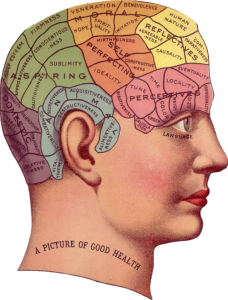
Behaviour is the result of cognitive functions and emotions, which all have a biological basis, because their origin is in the brain. Cognitive neuroscience examines the biological basis of behaviour. For cycling, different cognitive functions (perception, learning, movement, …) and at least one emotion (fear) are of great importance. These cognitive functions and emotions are almost always examined in a lab, and sometimes using animals. Now, cycling in a lab is very difficult, and none of the laboratory animals can ride a bicycle. Therefore, what cognitive neuroscience teaches us about cycling is based on research on other behaviours. For example, manipulating a joystick, detecting a stimulus on a computer screen, and following a moving stimulus on a computer screen with a computer mouse.
Although cognitive neuroscience does not investigate cycling directly, it provides a lot of useful insights. The brain we use for cycling is also used for running, playing tennis, and carpentry. The cartoon at the right-hand side suggests that different parts of our brain our specialised in typical human functions, to which also cycling could also belong. However, this is a misleading picture because the parts of our brain that are involved in cycling are also involved in running, playing tennis, and carpentry. Moreover, several of these brain areas have a similar function in lower animals, and in those animals we can study the structure and function of brain areas much more precisely than in humans.
Cycling is a complicated activity in which multiple unconscious processes occur simultaneously. For a good understanding, it is useful to separate these processes and to describe them separately. We will do so starting from the following four questions:
- How do we stay upright?
- How do we steer?
- How do we see danger?
- What does fear do to us?
None of these questions can be answered in a few sentences. Therefore, the answers are split over multiple page, each with their own starting page.